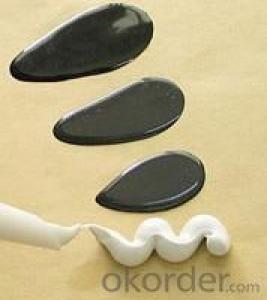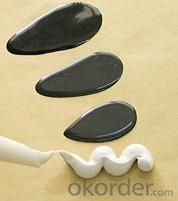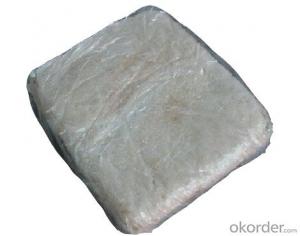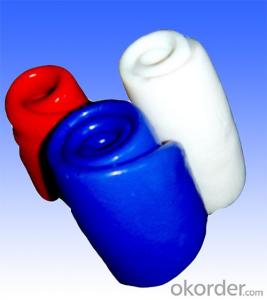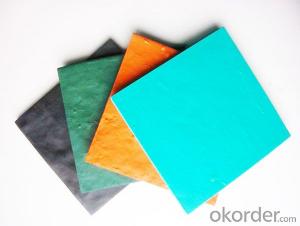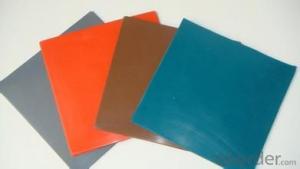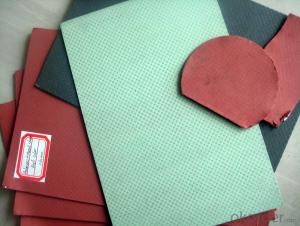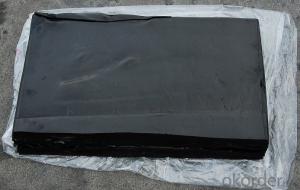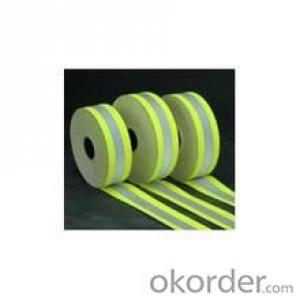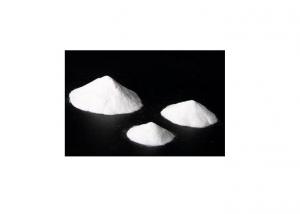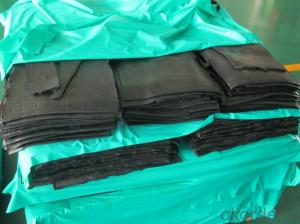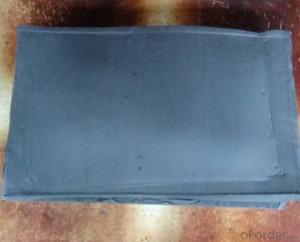High Thermal Conductivity RTV Epoxy Potting Adhesive Glue
- Loading Port:
- Guangzhou
- Payment Terms:
- TT OR LC
- Min Order Qty:
- 10000 m.t.
- Supply Capability:
- 50000 m.t./month
OKorder Service Pledge
OKorder Financial Service
You Might Also Like
Features
1. Excellent adhesion, resistance to cracking
2. Good toughness, high hardness
3. Excellent electrical insulation properties, stability
4. High thermal conductivity, low thermal expansion coefficient
5. Higher Tg, can be used in the 150 ° C -180 ° C long-term
6. Good waterproof, moisture resistance, low water absorption
7. Flame retardant grade up to UL94 V-1
Operation
1. Mixing: Stirring A component evenly in the original package, then A, B components according to the Weight ratio of 7: 1 are weighed and mixed, then start to potting after mixing evenly.
2. The B component may appear crystal or caking during storage ( this is normal), if the crystallization Need to placed in the oven at 80° C to melt before using(the containers should be in open state, in order to avoid the gas expansion, damage container), and Then cooling to room temperature before using, It does not affect its performance.
3. If necessary, the device with good sealing can continue to vacuumize, is helpful to increase the Electrical properties of the device.
4. The curing conditions: 80 ° C/2hrs or 25 ° C/24hrs.
5. For the use of glue equipment please consult our marketing department.
Package Storage
A component: 14kg/ plastic bucket Keep in cool and ventilative place
B component: 1kg/ bottle Temperature≤ 25° C, humidity≤ 50%RH
Shelf life: 12 months both of A and B
Properties before curing | |||
Part | E4215 A | E4215 B | |
Appearance | Black liquid | Brown liquid | |
Viscosity, mPa.s(25°C) | 25,000±5,000 | 100-300 | |
Density, g/cm3(25°C) | 1.95±0.1 | 1.12±0.05 | |
Mixture/mass ratio | A:B = 7: 1 | ||
Viscosity after mixing, mPa.s (25°C) | 4000±500 | ||
Operation time , hr(25°C) | 1.2 | ||
Gel time ,hr (25°C) | 12 | ||
Properties after curing | |||
Hardness, Shore D | ≥90 | ||
Expansion coefficient μm/(m,°C) | 210 | ||
Thermal conductivity W/mK | 1.1 | ||
Glass transition temperature °C | 135 | ||
Tensile-shear strength, Mpa, Fe/ Fe | ≥10 | ||
Dielectric strength kV/mm(25°C ) | ≥20 | ||
Dissipation Factor (1MHz)(25°C) | 0.09 | ||
Dielectric constant (1 MHz) (25°C) | 2.9 | ||
Volume resistance DC500V, Ω@cm | 6.00E +15 | ||
- Q: What material has high temperature resistance, good tightness, and soft as rubber?High temperature above 500
- Such a high temperature, organic polymer materials can not meet, it is recommended to consider using asbestos materials, but the sealing problem should be considered.
- Q: PVC how long does the rubber waterproof finish?
- Three yuan ethylene propylene rubber rollIt has excellent low temperature resistance, and can keep good elasticity at low temperature. The temperature can reach below -40 after its minimum use, and its heat resistance is excellent (up to 120 degrees Celsius).Cold construction with single layer, simplified construction technology and improved construction efficiency.Excellent acid and alkali resistanceThree yuan ethylene propylene rubber coil for a variety of polar chemicals, acid and alkali have good resistance, long-term contact material properties change little.The electrical insulation resistanceThree yuan ethylene propylene rubber molecular structure non-polar, low water absorption, has good insulation characteristics.
- Q: What's the name of a soft rubber material that is resistant to high temperatures above 500 degrees?
- Because it is sealed role, so generally about 300 degrees using silica gel material, if the material is good, 500 degrees oven occasionally also can. Generally 500 degrees is to use asbestos strip or high temperature cotton to seal
- Q: What does "CAF" mean in rubber material? Know more about it
- Should be EPDM bar, that is, three yuan ethylene propylene rubber, the use of a wide range.
- Q: What is Optima's whole wardrobe? Is it environmentally friendly?
- Optima is a solid wood particle board, environmentally friendly, tasteless, but my custom-made Optima wardrobe drying for a few months, there are still a big smell ~!
- Q: Is vulcanized rubber thermoplastic or thermosetting?
- Thermoplastic rubber is a mixture of traditional vulcanized or uncured thermosetting rubber (e.g. EPDM) and rigid thermoplastics (such as polypropylene or polystyrene)
- Q: Are rubber materials isotropic? Or is it anisotropic?
- Generally, it's the same sex, but it has something to do with the direction of your calender
- Q: What rubber material is used for explosion proof flame retardant aprons?
- Of course, butyl rubber is also possible, has excellent air tightness, heat resistance, resistance to sunlight, ozone resistance, good insulation performance; have good resistance to polar solvents such as alcohols, ketones, esters, etc., can be exposed to animal and vegetable oils or itch in. It can be used in chemical resistance or vacuum equipment.
- Q: Which is good, polyurethane or rubber sole?
- Synthetic rubber is also divided into wear-resistant rubber, environmental protection rubber, air rubber, viscous rubber, hard rubber, carbon rubber.(1) wear resistant rubber: wear resistance and toughness of wear-resistant rubber are very good, so it is very durable, this kind of rubber material is usually used on the big bottom of tennis shoes.(2) environmental protection rubber: also known as recycled rubber, this rubber outsole contains up to 10% recycled rubber, the main purpose is for environmental protection.(3) air rubber: Rubber contains air, has a certain shock absorption function, but not very wear-resistant, not widely used.(4) viscous rubber: sticky rubber is characterized by good flexibility, and very slippery, generally used in indoor sports shoes.(5) hard rubber: hard rubber is the most comprehensive rubber in the outsole rubber. It is tough, slippery and very wear-resistant. It is also widely used. Multifunctional shoes and basketball shoes are mostly made of this kind of rubber.(6) adding carbon rubber: adding the carbon in the ordinary rubber material, the rubber is more durable, mostly using the rubber shoes, and will leave a BRS letter in front part of shoes soles, to use carbon rubber outsole.
- Q: What are the advantages and disadvantages of silicone?
- It is worth mentioning that in biomedical engineering, polymer material plays a very important role, and the silicone rubber is a kind of important medical polymer materials, it has excellent physiological inert, non-toxic, tasteless, non corrosive, anti coagulation, and the good compatibility, can withstand the harsh conditions of sterilization. According to the requirements, it can be processed into pipes, sheets, films and special-shaped components, which can be used as medical instruments, artificial organs and so on. Nowadays, there are special medical grade silicone rubber both at home and abroad.
Send your message to us
High Thermal Conductivity RTV Epoxy Potting Adhesive Glue
- Loading Port:
- Guangzhou
- Payment Terms:
- TT OR LC
- Min Order Qty:
- 10000 m.t.
- Supply Capability:
- 50000 m.t./month
OKorder Service Pledge
OKorder Financial Service
Similar products
Hot products
Hot Searches
Related keywords
